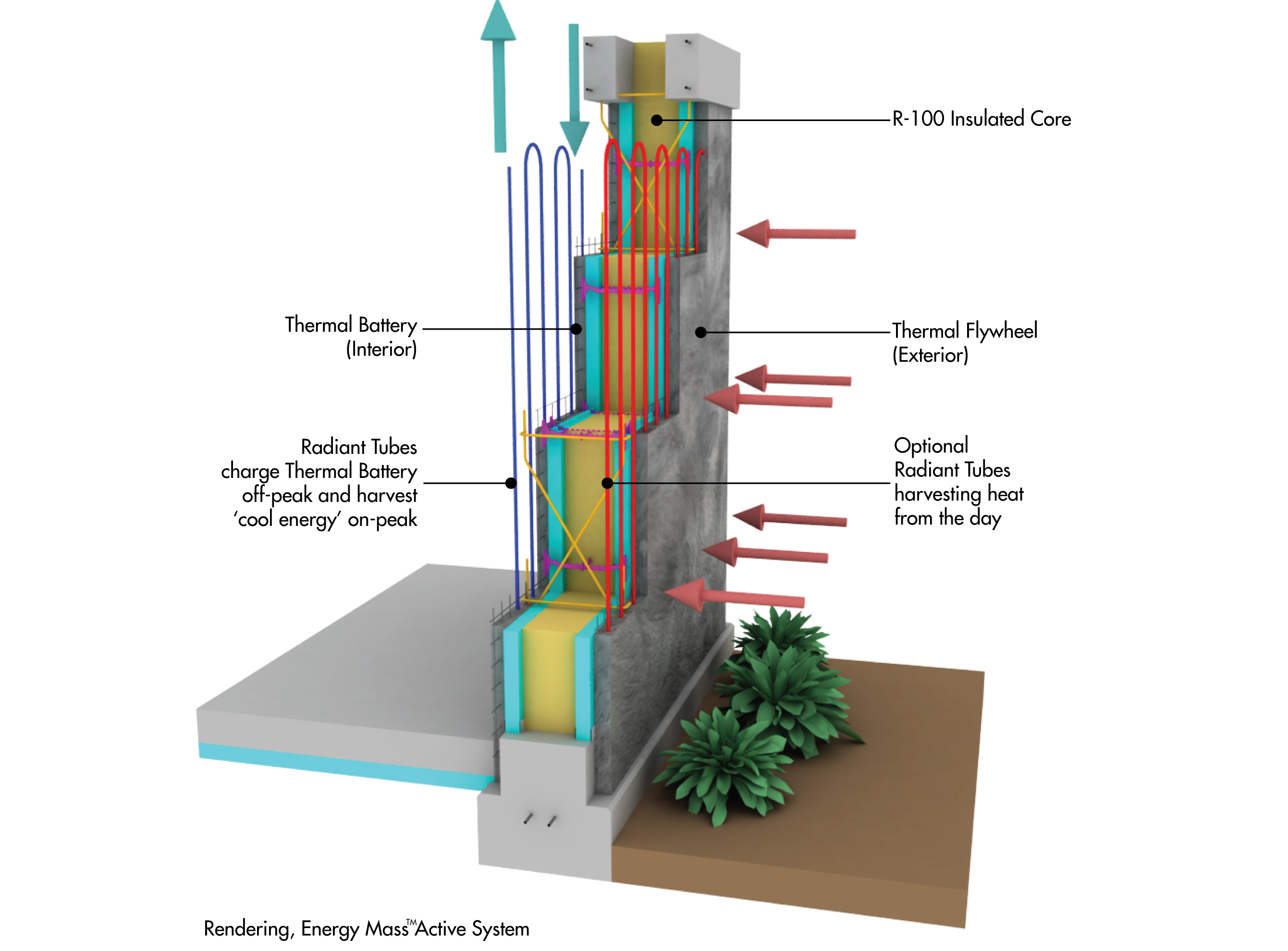As the wine industry continues to expand, the growing regions of California are in need of storage facilities for barrel and case goods either to create additional space or to retire aging out-of-date facilities. While underground caves provide an excellent environment for barrel storage, they are expensive and not practical in every situation. Above ground storage facilities have provided, and continue to provide space for wine storage, however, the ensuing environment is less than ideal.
A new building system, coupled with smart building technology, can combine the best of both worlds – the large storage capacity of a building above the ground with the low energy use and ideal environment of a below ground cave.
This post provides a comparison of the Energy Mass™smart building system [1] and cave structures.

The pros and cons of Caves
A cave provides a low energy solution to wine barrel storage while keeping the temperature cool and the humidity high. A cave buried in the earth will maintain a near constant temperature as it is isolated from the temperature swings above the ground. And, night flushing, where cool night air is brought into the cave via fans can assist in maintaining the constant temperature should the cave begin to warm up due to an activity that took place inside or because the crown of the arch was close to the surface of the ground where the sun could heat it up. Any wine maker who has experience with a cave and a steel refrigerated building will tell you that the cave will cost less to keep cool and will significantly reduce the evaporative loss from the barrels. This is because the humidity can remain high as a result of the constant temperature and lack of the drying effects caused by the refrigeration. Caves are also romantic and nostalgic reminding us of a time when good wine was the result of blending science and art. However, caves cannot be constructed everywhere as they require certain kinds of soil conditions. Further, due to the low-slung arch needed for structure, the amount of wine that can be stored per square foot of floor area is much lower than in a rectangular building with twenty-foot eaves, making caves the most expensive solution per square foot of usable wine storage area.
The pros and cons of the standard (insulated metal building)
Buildings are in general less expensive to construct than caves, but when one considers the limited amount of storage in a cave, the cost of a building per square foot of storage, is significantly less than that of a cave. However, they are energy hogs and expensive to cool. Further, the refrigeration system dries out the air, lowering the humidity and increasing the evaporative losses through the barrels. They are boxy and unsightly -- unsympathetic to the romantic feeling of the wine makers art.
The pros and cons of the Energy Mass™ Smart building
The Energy Mass™smart building technology incorporates the best qualities of a wine cave and those of an above ground building while avoiding the negative qualities of both. Constructed with a patented combination of foam, steel, glass reinforced polymer and concrete, the system duplicates the insulative and thermal mass qualities of a cave resulting in a constant temperature and humidity environment that responds to night flushing. When the days are hot and the nights don’t cool down enough for night flushing to maintain the temperature, an innovative cooling system participates to hold the temperature exactly where the wine maker wants it to be. The cooling is silent and efficient and does not dry out the air or reduce the humidity, thus keeping more of the precious wine inside the wine barrels. When combined with the patented hydronically insulated roof, the Energy Mass™smart building technology out-performs a cave but maintains the high ratio of storage area per square foot of an above ground building. It offers the perfect environment for the wine maker to perform their art while providing authentic and stunning beauty reminiscent of earlier times. It minimizes evaporative losses, holding on to more of the angels share, while using about 80% less energy than a standard wine storage building.
All off-grid solutions have the inevitable problem of energy storage. Standard refrigeration works while the sun is shining but shuts down when it sets. With the Energy Mass™smart building technology this problem is solved. Coupled to the radiant cooling system, a small photovoltaic array uses the sun’s energy to make ice during the day, which stores cool energy that can be pumped throughout the interior envelope long after the sun has set. Pumps, which draw very little electrical energy, can run on the stored energy of a car battery.
The Energy Mass™ smart building system is the most advanced, sustainable, net-zero-energy construction system in the world.
Its only one straw, said eight billion people
A 21stcentury winery building has to be more than just another place to make, store and age wine. With the unprecedented changes confronting our future, it is the responsibility of each of us to do their share and make a difference. Great buildings of the past were icons of their era, embodiments of the functional, social, economic and metaphysical forces that shaped them. They were a product of the best society had to offer and a reflection of the values of those who made them. It’s our decision to continue this tradition… or not.
[1] Developed by Gary Black and his colleagues at Integrated Structures, Incorporated, (ISI). Black is a licensed professional engineer, president of ISI and a professor of architecture at the University of California, Berkeley’s College of Environmental Design. The system has been extensively tested under his guidance at the University’s Earthquake Research Center, and employed in the construction of numerous buildings throughout California.